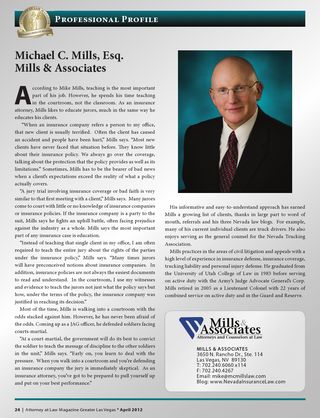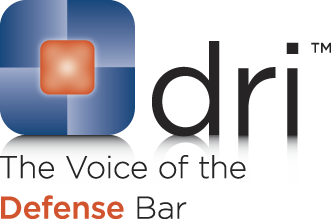WHEN SERVING AN OFFER OF JUDGMENT, TIMING AND FORM ARE EVERYTHING
In Part I of this Post, I discussed an Offer of Judgment strategy and detailed the advantages of serving a defense Offer of Judgment in every civil case.
An obvious advantage of serving an Offer of Judgment is that if the opponent accepts the offer, you have put an end to the case. The less obvious advantage is that if the Offer expires without having been accepted, you have placed your opponent at risk of having to pay your subsequent attorney’s fees and costs. By putting the Offer in the right form and by making the Offer the at the most opportune time, you can increase the possibility that the Offer will be accepted. If the Offer of Judgment is not accepted and if you have used the right form, you will have simplified the Trial Judge’s task of determining whether the penalties detailed by the Offer of Judgment rules should be imposed post-trial. Let’s talk about each one of these issues.
I. ONCE YOU SERVE AN OFFER OF JUDGMENT, IT WILL REMAIN OPEN FOR TEN DAYS WHETHER YOU LIKE IT OR NOT
An Offer of Judgment that is not accepted will expire, if after 10 days from service, the Offer has not been accepted. N.R.C.P. 68(d) and (e). N.R.S. 17.115(3) and (4). Even if the offer expires, the offeror is free to make any number of subsequent Offers under any new terms. The Nevada Supreme Court has recently said that the offeror must hold every Offer open for the full 10 days. The offeror is not free to withdraw the Offer, even if the offeror has second thoughts.
In the case of Nava v. Second Jud. Dist. Ct., 118 Nev. 396, 46 P.3d 60 (2002), the offeror tried to withdraw a valid offer during this 10 day offer period. The Nevada Supreme Court held that the Offer cannot be withdrawn during the 10 day period, even if the offeror changes his mind.
The lesson to be learned is that an Offer must be well thought out and made in the proper form, because once the Offer is served, you face the risk that the Offer could be accepted within the 10 days. Always remember that if the Offer is not accepted, you will be free to make any subsequent offer under any other terms that you choose.
II. AS A GENERAL RULE, THE SOONER YOU FILE THE OFFER OF JUDGMENT THE BETTER
There are great reasons to serve a defense Offer of Judgment as soon as possible after the Answer is filed. If the Offer is accepted, the amount spent on defense attorney’s fees will be reduced. In the alternative, if the Offer expires without being accepted, the earlier possible penalties may come into play. N.R.C.P. 68(f) and N.R.S. 17.115(4). In a case that ultimately goes to trial, those penalties can become significant.
If the defendant obtains a verdict that is better than what had been offered, the Plaintiff cannot collect attorney’s fees, interest or costs from the date of service of the Offer. Therefore, the sooner you make the offer, the sooner you qualify to reap those benefits.
Furthermore, the sooner the defense serves its offer, the sooner the defense has a basis from which to argue that it should recover its costs and attorney’s fees. Thus, the earlier the Offer is made, the larger the amount of defense attorney’s fees and costs are subject to being recaptured. And always remember, if this Offer is not accepted, you can always make another Offer under any other terms you want.
III. WHERE POSSIBLE, OFFER TO PAY THE OPPONENT’S COSTS AS WELL AS THE FACE AMOUNT OF THE OFFER
For many years, defense attorneys used an Offer of Judgment form which reads that the amount offered “includes” costs and that the offeror would not pay any costs in addition to stated amount. However, changes made to the Offer of Judgment rules in 1998 have caused careful practitioners to reconsider the use of that old form in light of the treatment given such an Offer by the Trial Judge following a verdict.
To understand this concept, one must remember that the Offer of Judgment penalties only come into play when the amount of the Offer of Judgment is more favorable than the verdict. In other words, the Trial Judge must compare the amount of the Offer to the amount of the Verdict and determine which is more favorable to the offeror.
Under the new rules, if an Offer of Judgment uses the old wording, the Trial Judge must subtract the costs that the Plaintiff had incurred at the time that the offer was made and then reduce the face value of the Offer by the amount of those costs. Only then will the Trial Judge compare the verdict with the reduced value of the Offer of Judgment to determine which one is more favorable. N.R.C.P. 68(g), N.R.S. 17.115(5). In other words, the Plaintiff’s costs will be used to reduce the face value of the Offer before the decision as to which if the two is more favorable is made.
If the defense has used the old form, and the face value of the defense offer is only a few dollars below the verdict, the Plaintiff will be extremely motivated to prove any costs that it can in order to avoid the penalty provisions of the Offer of Judgment rules. Under this hypothetical scenario, if the Plaintiff’s attorney were able to find just a few dollars in costs and thereby reduce the face value of the Offer below the amount of the verdict, that attorney may be protecting the Plaintiff from having to pay the Defendant’s attorney’s fees and reestablishing Plaintiff’s right to pre-judgment interest during the pendency of the trial. The proof of just a few dollars in costs has the potential to swing the final outcome of the case by thousands or even tens of thousands of dollars.
The old Offer of Judgment form can still be used, but should only be used as a tactic in an overall negotiation strategy. If the defendant is unwilling to pay more than an exactly stated amount, the stated amount should increased by the amount of the estimated costs. To do otherwise, gives the Plaintiff’s attorney too much power to affect the bottom line after the jury has rendered its verdict. Keep in mind however that if costs can be reasonably estimated, there is no reason why the new form of the Offer of Judgment (which says that that it contemplates payment of costs over and above the stated of the Offer) should not be used contemplating a challenge to unreasonable costs by way of a Motion to Retax, if the Offer of Judgment is accepted.
IV. CONCLUSION
The Offer of Judgment is the least understood and most underutilized strategic tool available to the trial attorney. Make your Offers of Judgment as soon as possible after the Answer if filed, even if it is for a nuisance amount, thereby encouraging the Plaintiff’s attorney to discuss with the Plaintiff the real risks of litigation (namely the possibility of Plaintiff having to pay the defense attorney’s fees and costs). In virtually every case, make your Offers of Judgment with the understanding that you will add the Plaintiff’s costs to the Offer. You will always have the opportunity to ask the court to reduce excessive alleged costs with a Motion to Retax. And remember, the earlier you make your Offer, the lower the Plaintiff’s costs will be. By properly utilizing this strategy, you will be using the Offer of Judgment rules to their full potential and to your full advantage. This Offer of Judgment strategy will encourage settlement of the case or will best position you to invoke the penalties of the rule when the opportunity presents itself after the verdict.
Additional information on strategically implementing Offers of Judgment in Nevada litigation can be found by clicking HERE. We also encourage you to explore the “Categories” listed in the right column for related topics.
 Follow
Follow Email
Email


